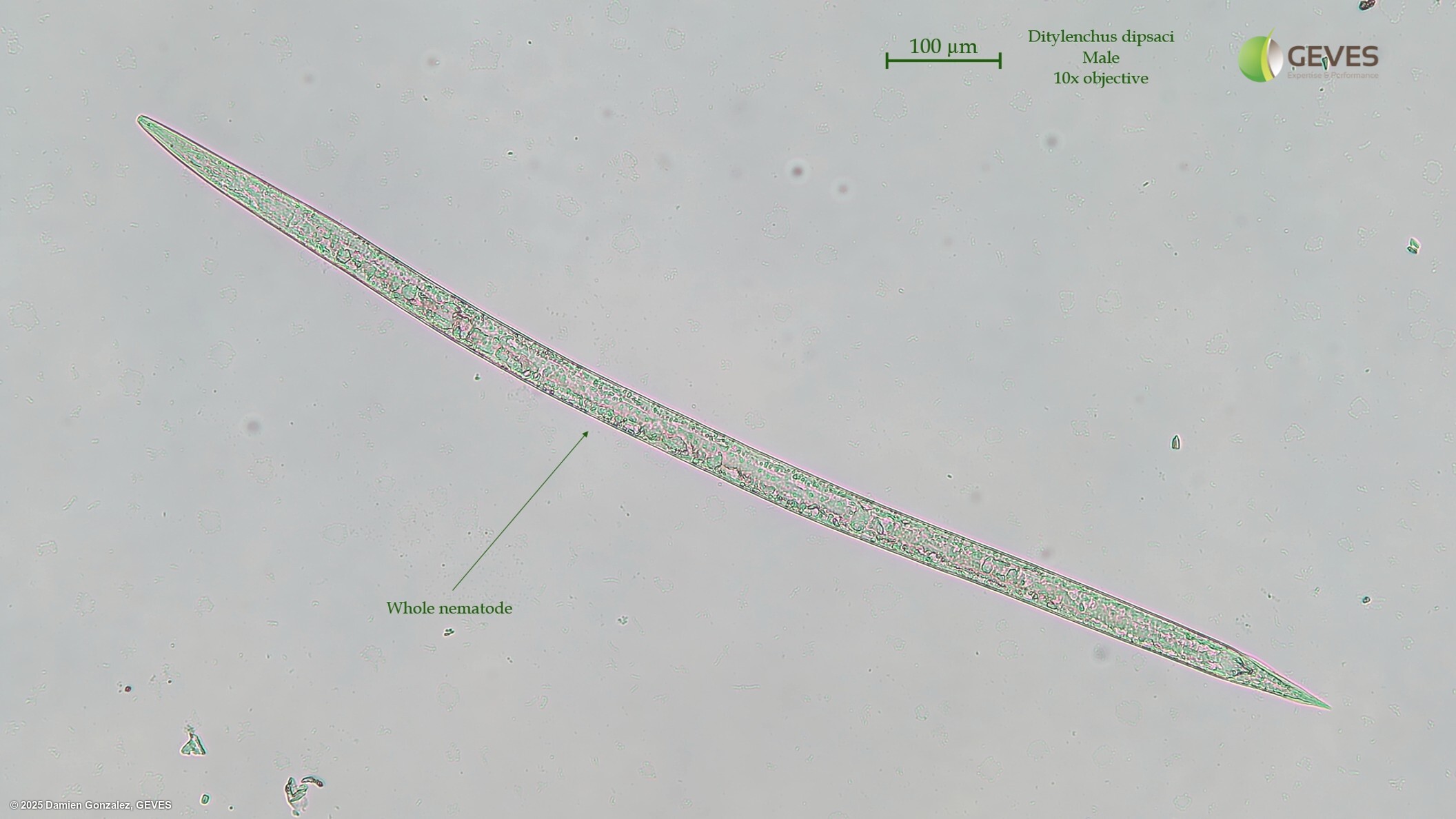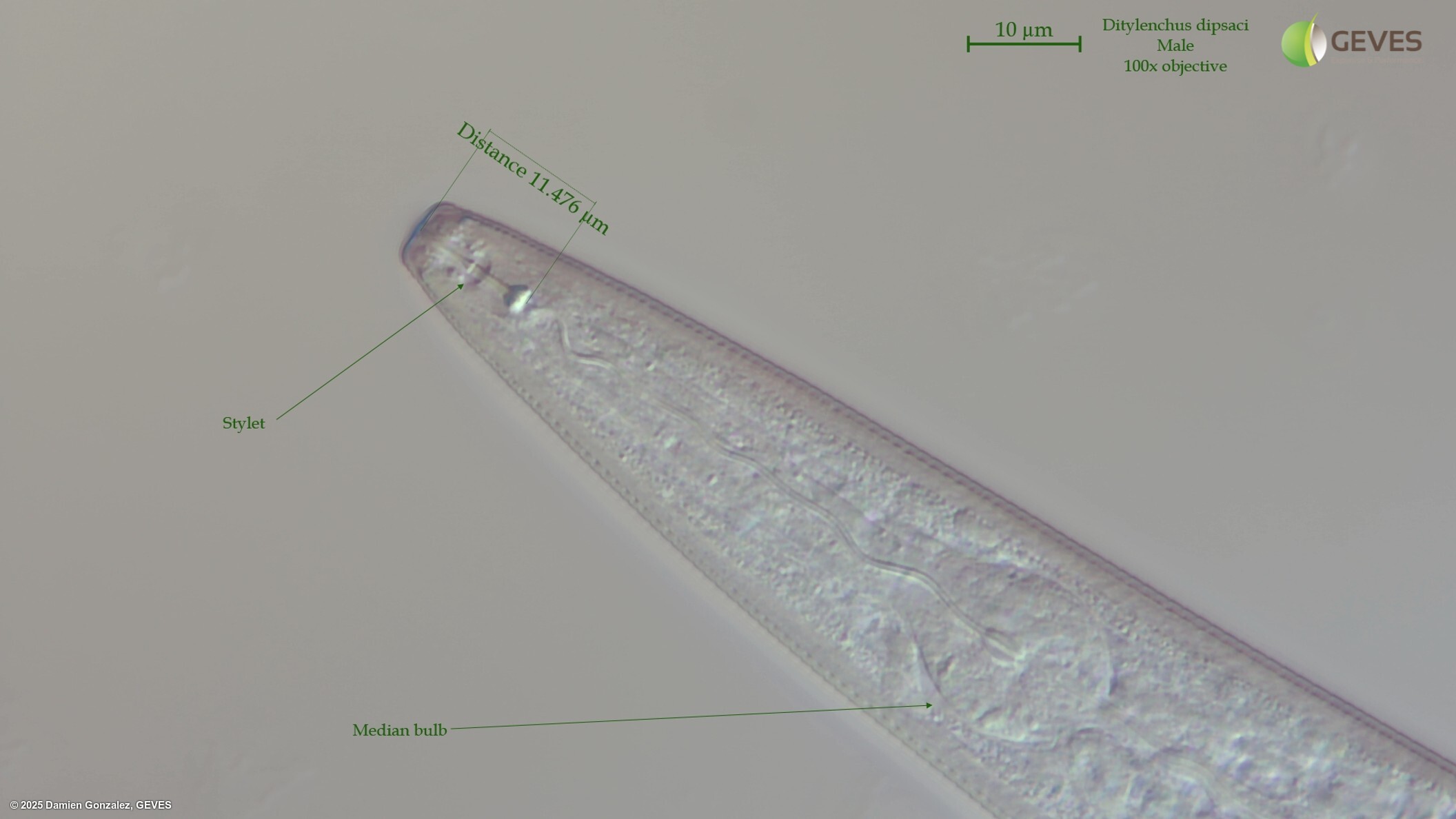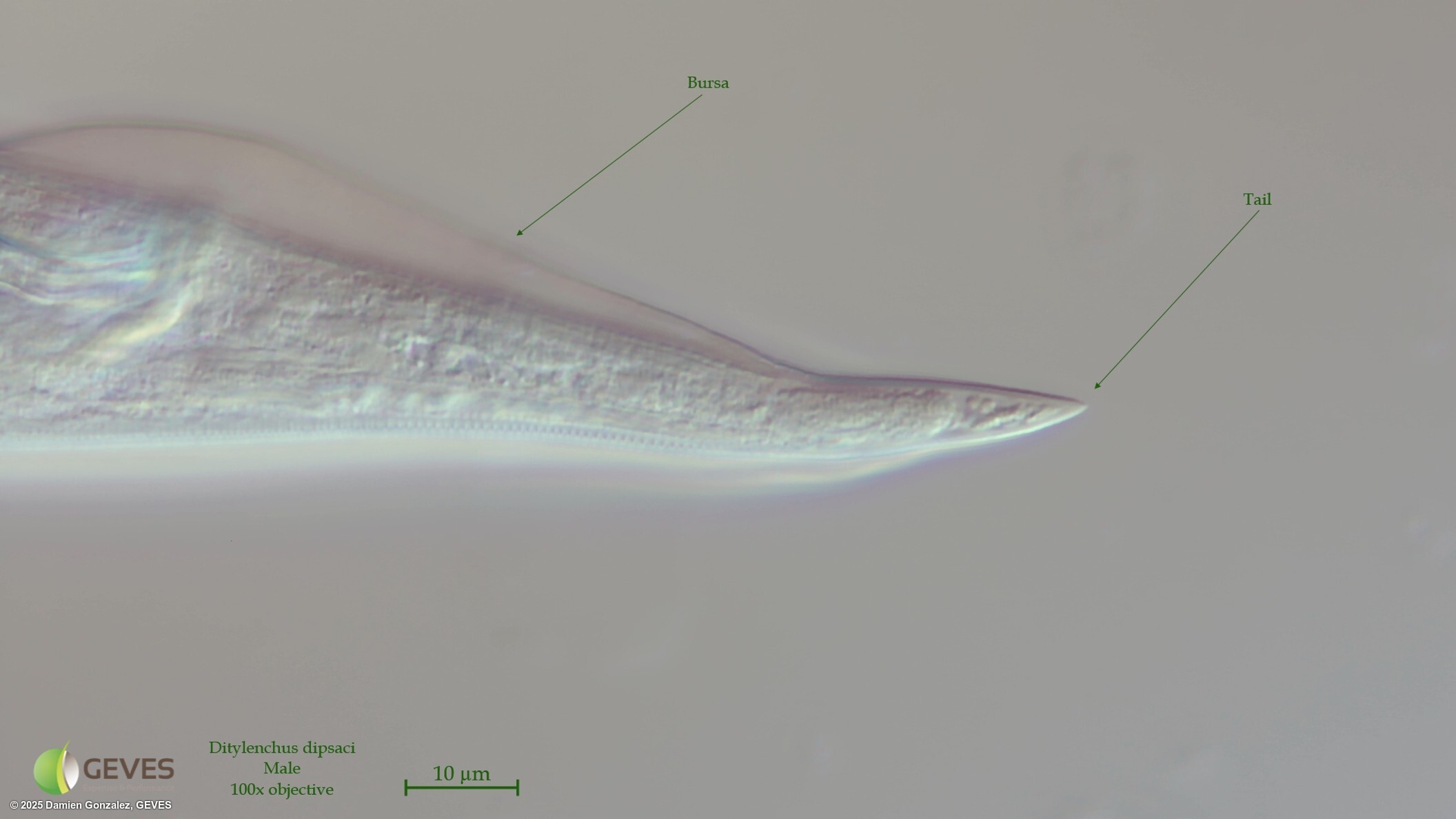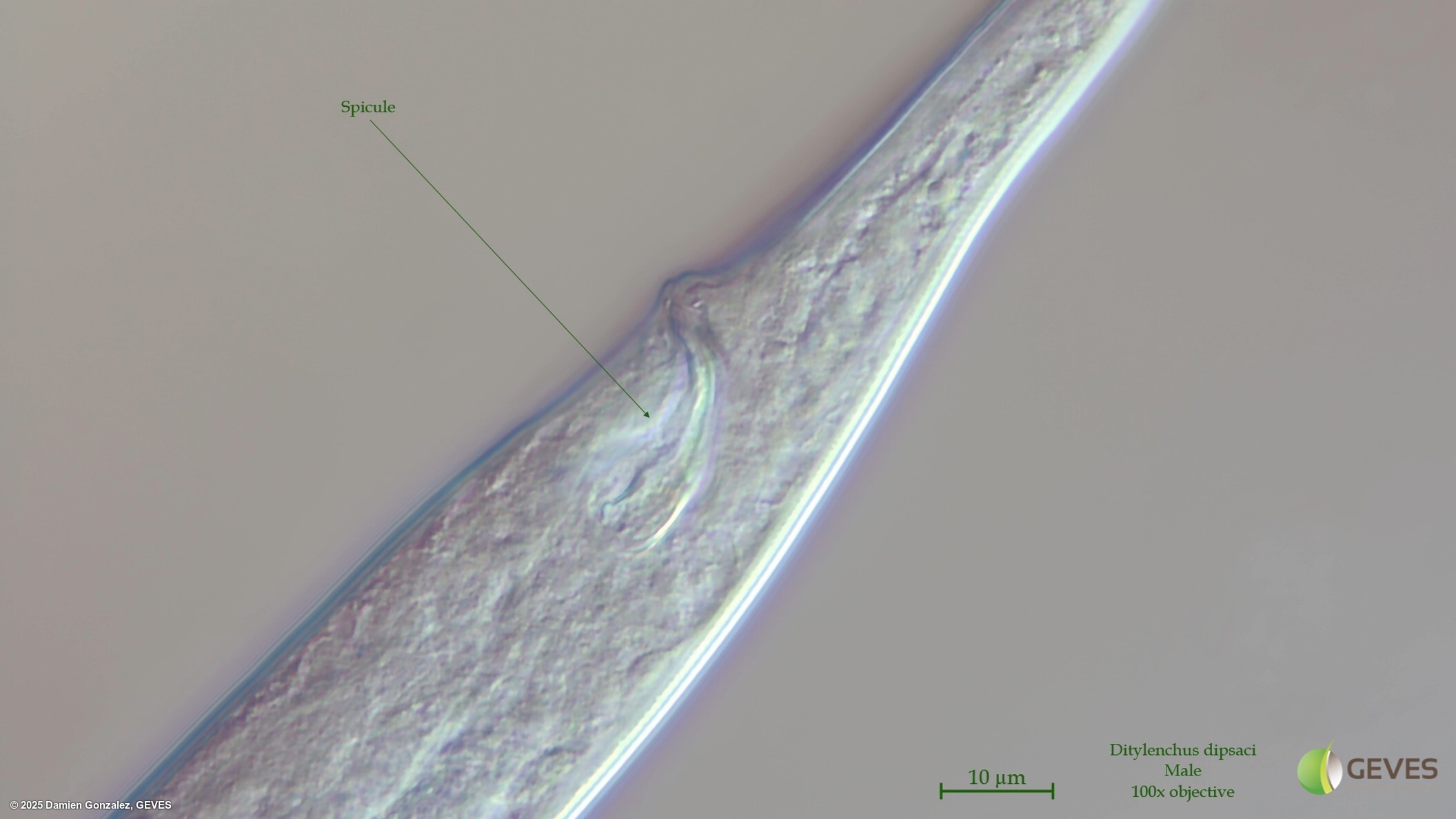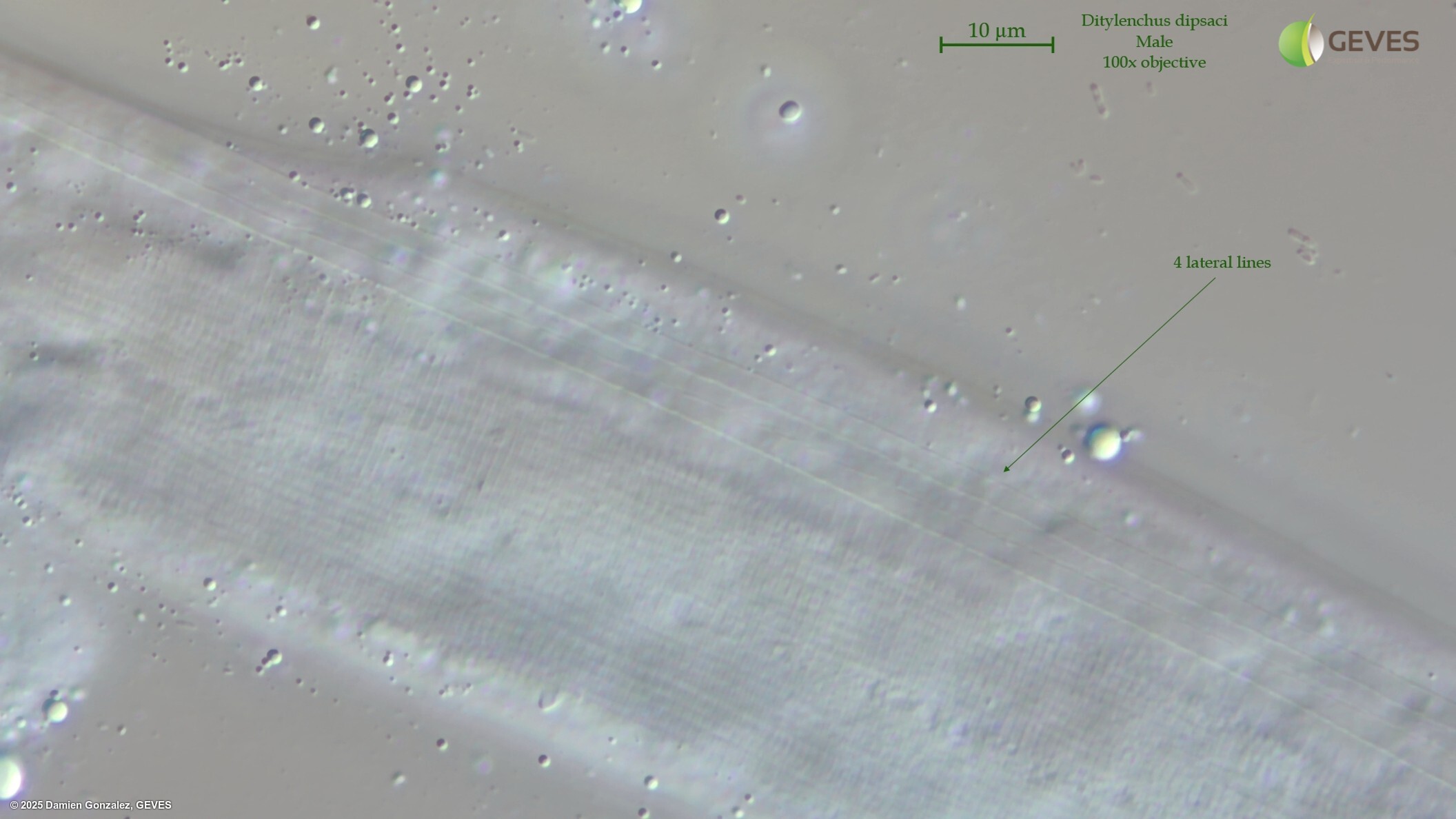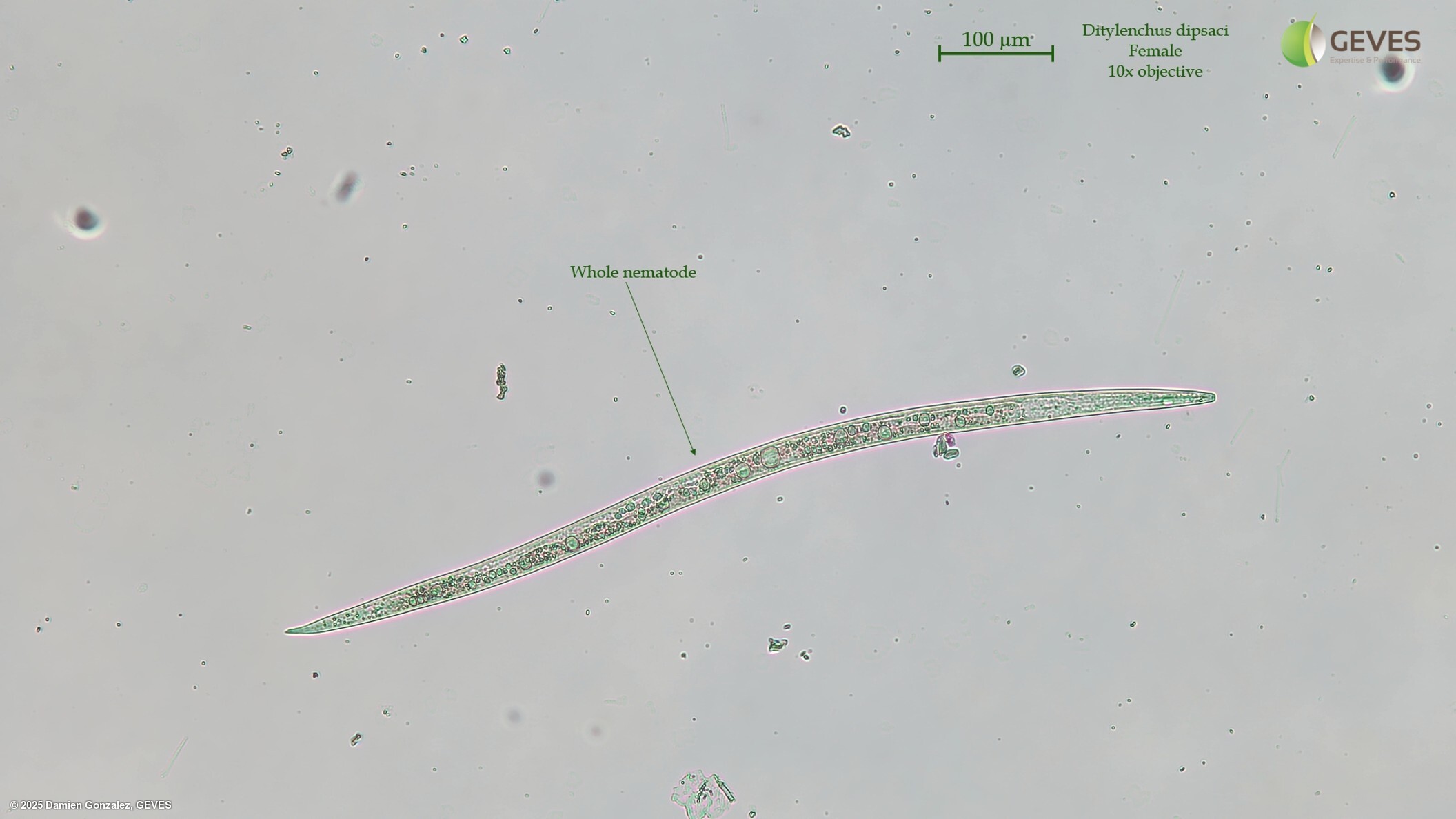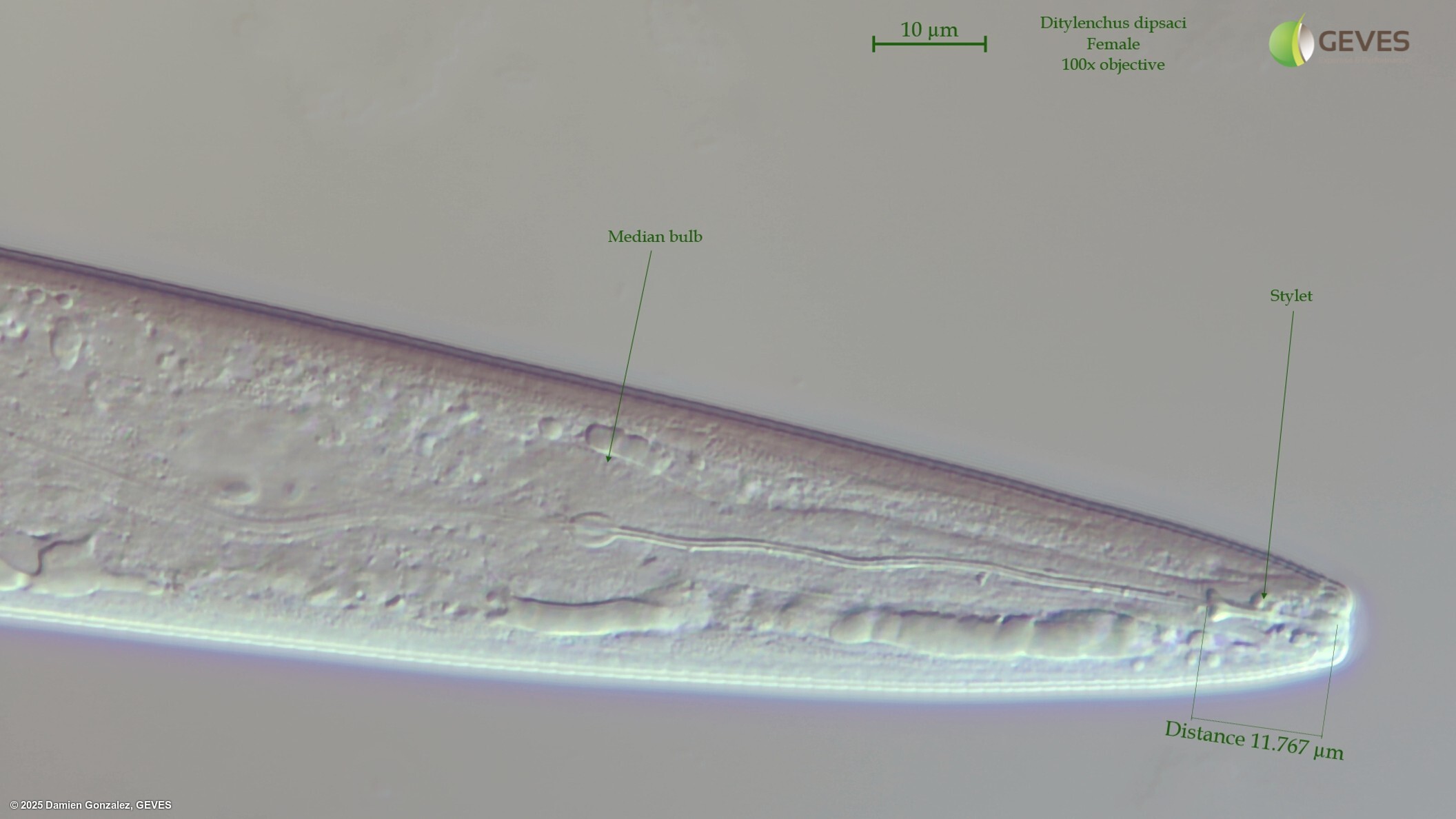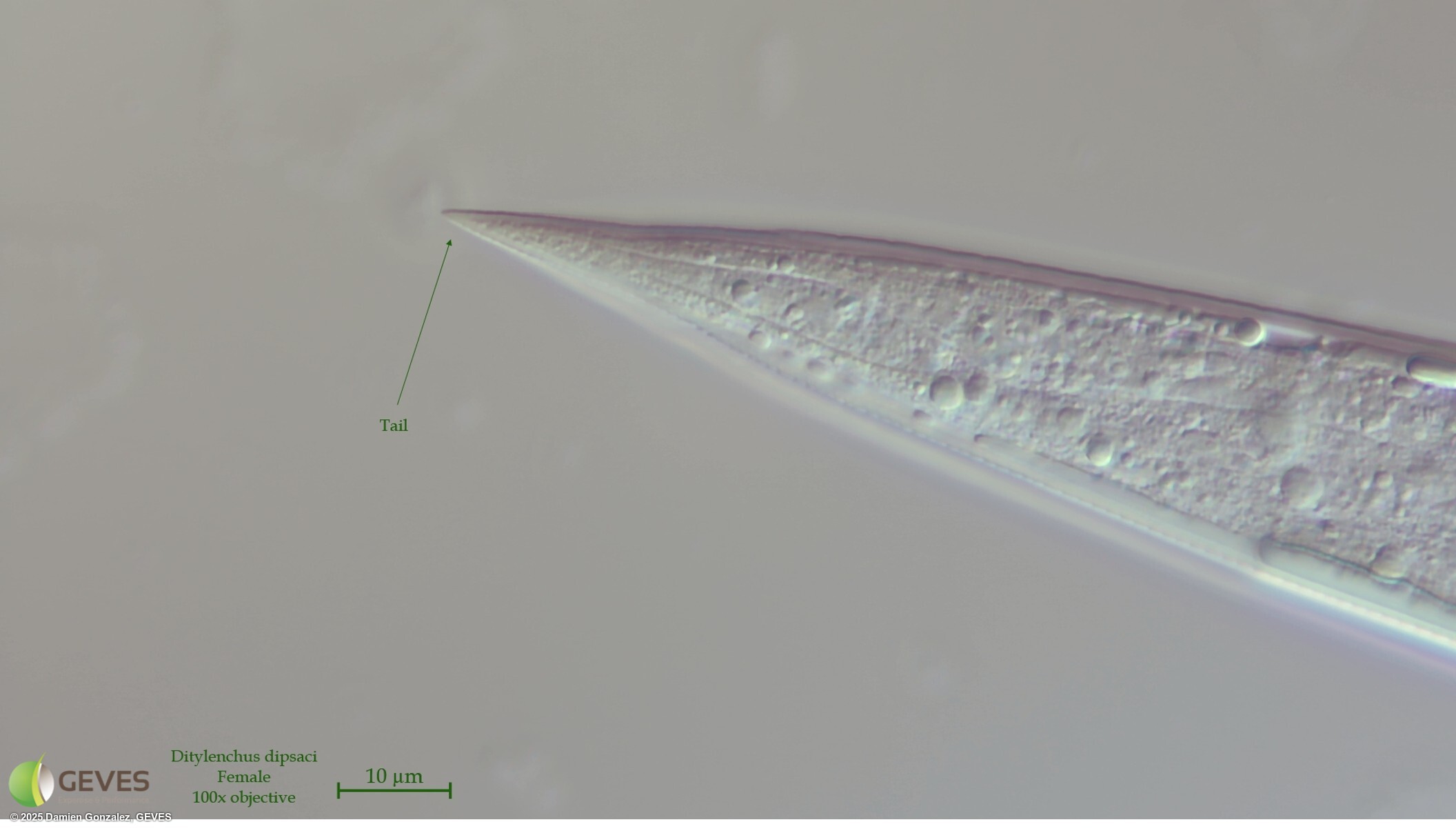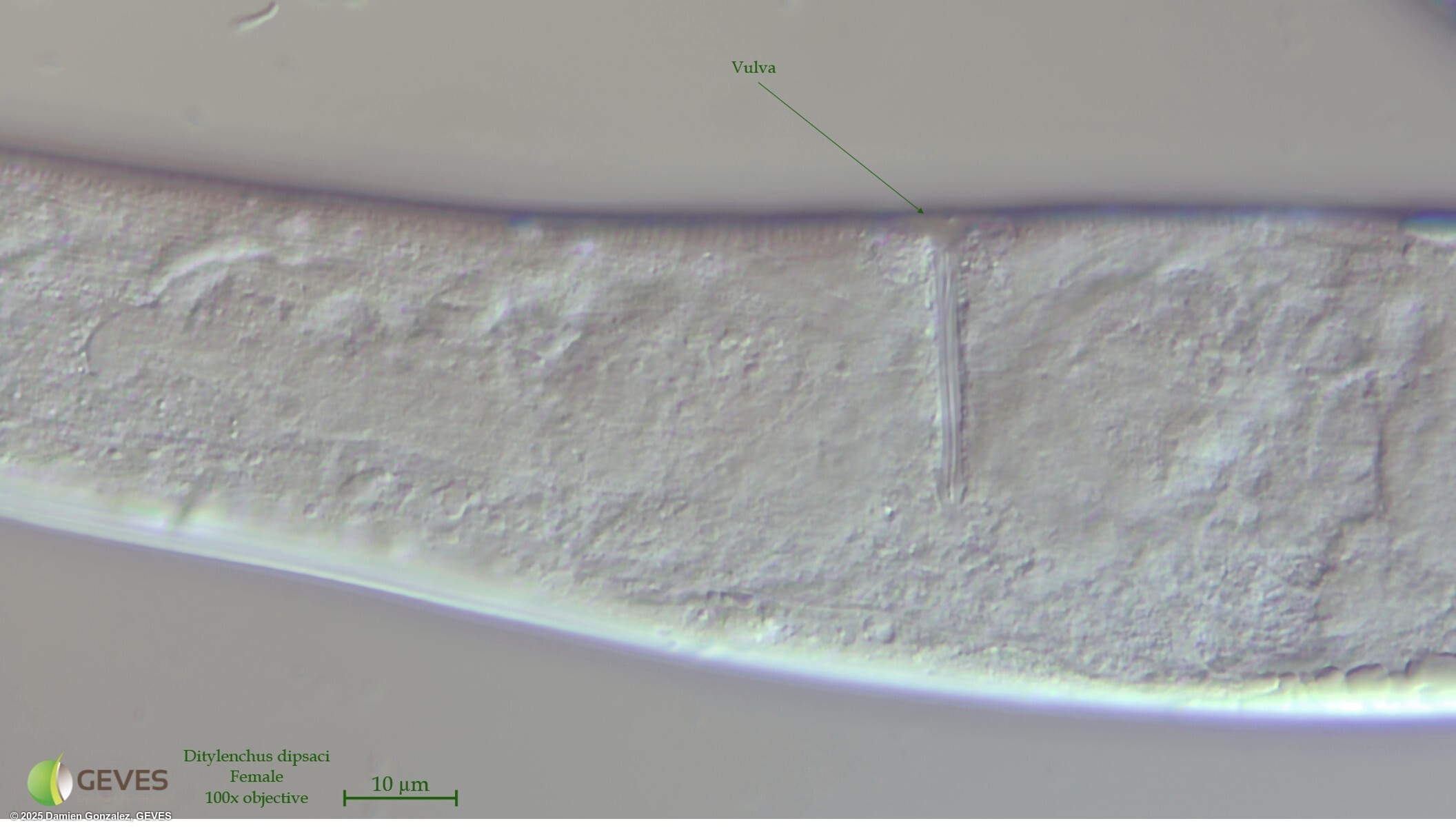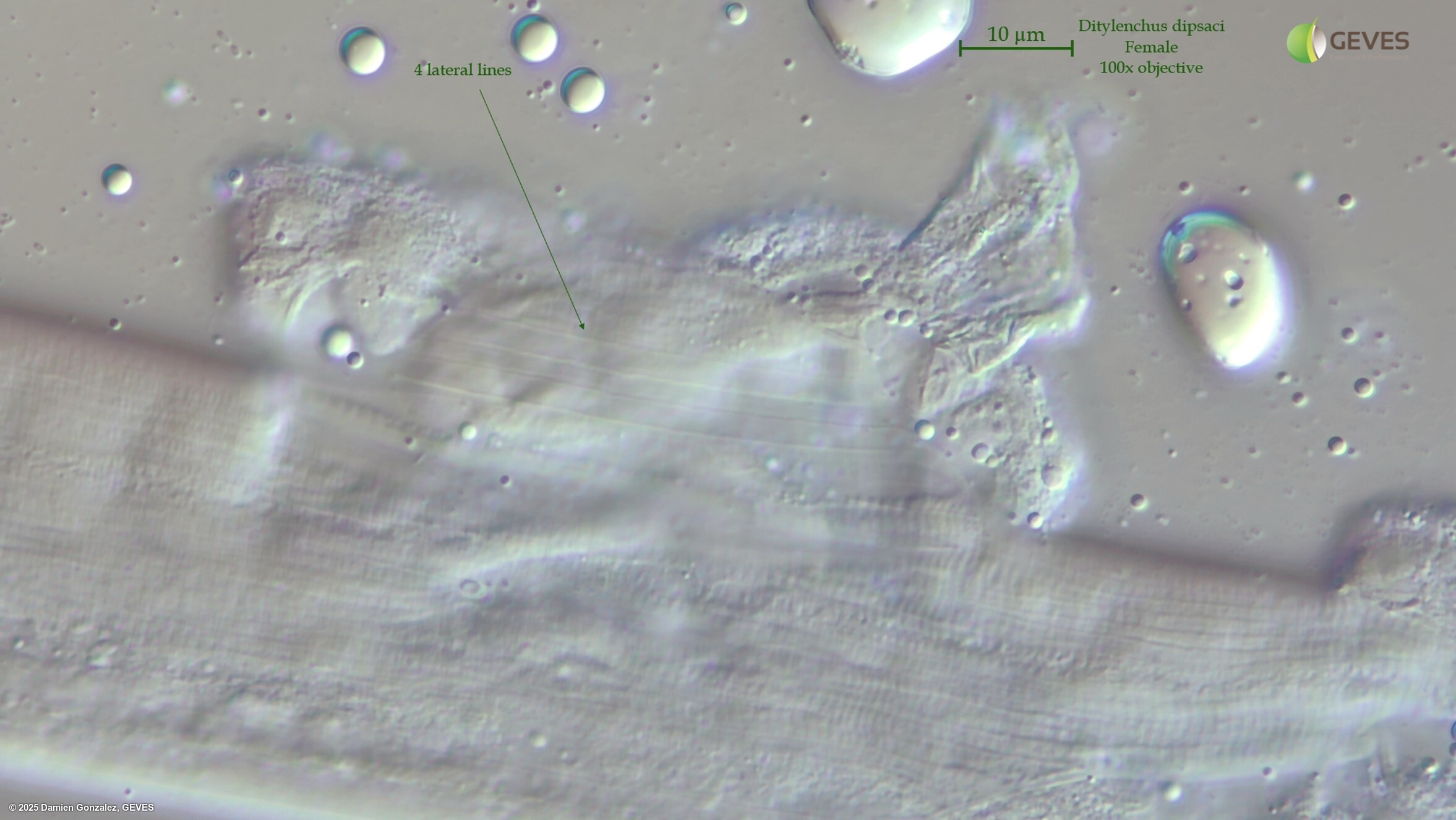Ditylenchus dipsaci
Overview
|
Scientific name
|
Ditylenchus dipsaci |
|
Genus
|
Ditylenchus |
|
EPPO code
|
DITYDI |
|
Common name
|
Stem and bulb nematode |
|
Synonyms
|
Anguillula devastatrix |
Description
From ISTA 7-031 method: Examination under binocular magnifier and microscope for identification of the Ditylenchus genus. The identification of D. dipsaci and D. gigas is based on morphological characters observed under stereo-microscope at low magnification: aspect of the body (long, thin); swimming style of the nematode (undulating); shape of head (round to slightly flattened and not swollen compared to the body); shape of the tail (pointed conidial and short); head and tail slightly transparent and middle of the body is more dense. Moving nematodes are considered alive and motionless and degraded nematodes are considered dead. Identification of suspect nematodes can be done either by morphological criteria or PCR.
Examination with binocular magnifier and microscope for identification of D. dipsaci or D. gigas. Suspect nematodes are harvested and placed individually between slide and coverslides for identification. Examination of the specific morphological characters is done at high magnification (×100) and nematodes need to be immobile. To ensure immobility, nematodes are heated (to approximately 60 °C for about 10 to 30 s). The following observations are made under a microscope: the size of the stylet (10–12 µm); body size (1000–1300 µm for Dd and 1373–1950 µm for Dg); number of lateral lines (4) and the shape of tail (should be conical and pointed). Morphological characters are described in PM 7/87 (EPPO 2008) and Volvas et al. (2011). All of the above characters must be present on alfalfa seeds to identify nematodes as D. dipsaci. On faba bean seeds, nematodes with all the above criteria can be identified as Ditylenchus sp. However, as morphological criteria cannot be differentiated between the two species, except at the adult stage, a PCR is required.
